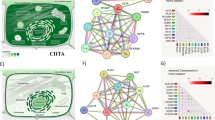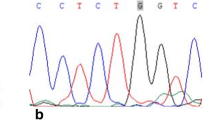Abstract
Background: Failure in self-tolerance towards β-cells in diabetes mellitus (DM) pathogenesis involves a series of complex events that are governed by environmental and genetic factors. Considering the importance of osteopontin (OPN) in T-helper-1 (Th1) cells development, the aim of this study was to evaluate the serum level and gene polymorphism of OPN in Iranian Type 1 diabetic (T1 DM) children. Methods: In this case-control study, 87 T1DM children and 86 healthy ones were enrolled. Blood samples of both groups were checked for OPN level. The single nucleotide polymorphisms (SNP) were genotyped by RFLP analysis for OPN rs1126772, its receptor integrin α4 (ITGA4) rs 1449263, and CD44 rs8193. Results: Serum levels of OPN in diabetic children were significantly higher in cases compared to the control group (p=0.023), but there was no significant relationship between OPN rs1126772 (p=0.79), its receptor integrin α4 (p=0.31), and CD44 rs8193 (p=0.45), and T1DM. Conclusion: Higher amounts of OPN were seen in T1DM children. It is assumed that OPN might have inducing effects on T1DM development, particularly when genetically susceptible individuals are predisposed by an environmental insult. However, the 3 SNPs of OPN and its receptors did not show noticeable association with T1DM. The power of our study (~19%) was insufficient to observe any significant statistical difference between the groups; moreover, this study does not exclude the possibility of association of other SNPs of OPN and its receptors with this disease, and more studies are needed to clarify the issue.
Similar content being viewed by others
References
Expert Committee on the Diagnosis and Classification of Diabetes Mellitus. Report of the expert committee on the diagnosis and classification of diabetes mellitus. Diabetes Care 2003, 26(Suppl 1): S5–20.
Anderson MS, Bluestone JA. The NOD mouse: a model of immune dysregulation. Annu Rev Immunol 2005, 23: 447–85
Todd JA, Mijovic C, Fletcher J, Jenkins D, Bradwell AR, Barnett AH. Identification of susceptibility loci for insulin-dependent diabetes mellitus by trans-racial gene mapping. Nature 1989, 338: 587–9.
Eisenbarth GS. Prediction of type 1 diabetes: the natural history of the prediabetic period. Adv Exp Med Biol 2004, 552: 268–90.
Bach JF. Insulin-dependent diabetes mellitus as an autoimmune disease. Endocr Rev 1994, 15: 516–42.
Kaufman DL, Clare-Salzler M, Tian J, et al. Spontaneous loss of T-cell tolerance to glutamic acid decarboxylase in murine insulin-dependent diabetes. Nature 1993, 366: 69–72.
Nakayama M, Abiru N, Moriyama H, et al. Prime role for an insulin epitope in the development of type 1 diabetes in NOD mice. Nature 2005, 435: 220–3.
Arif S, Tree TI, Astill TP, et al. Autoreactive T cell responses show proinflammatory polarization in diabetes but a regulatory phenotypein health. J Clin Invest 2004, 113: 451–63.
Brusko TM, Wasserfall CH, Clare-Salzler MJ, Schatz DA, Atkinson MA. Functional defects and the influence of age on the frequency of CD4+ CD25+ T-cells in type 1 diabetes. Diabetes 2005, 54: 1407–14.
Ashkar S, Weber GF, Panoutsakopoulou V, Sanchirico ME, Jansson M, Zawaideh S. Eta-1 (osteopontin): an early component of type-1 (cell-mediated) immunity. Science 2000, 287: 860–4.
Chabas D, Baranzini SE, Mitchell D, Bernard CC, Rittling SR, Denhardt DT. The influence of the proinflammatory cytokine, osteopontin, on autoimmune demyelinating disease. Science 2001, 294: 1731–5.
Steinman L. A rush to judgment on Th17. J Exp Med 2008, 205: 1517–22.
Denhardt DT, Giachelli CM, Rittling SR. Role of osteopontin in cellular signaling and toxicant injury. Annu Rev Pharmacol Toxicol 2001, 41: 723–49.
Giachelli CM, Steitz S. Osteopontin: a versatile regulator of inflammation and biomineralization. Matrix Biol 2000, 19: 615–22.
Ohmori R, Momiyama Y, Taniguchi H, et al. Plasma osteopontin levels are associated with the presence and extent of coronary artery disease. Atherosclerosis 2003, 170: 333–7.
Minoretti P, Falcone C, Calcagnino M, et al. Prognostic significance of plasma osteopontin levels in patients with chronic stable angina. Eur Heart J 2006, 27: 802–7.
Yamaguchi H, Igarashi M, Hirata A, et al. Progression of diabetic nephropathy enhances the plasma osteopontin level in type 2 diabetic patients. Endocr J 2004, 51: 499–504.
Takemoto M, Yokote K, Yamazaki M, et al. Enhanced expression of osteopontin by high glucose: involvement of osteopontin in diabetic macroangiopathy. Ann NY Acad Sci USA 2000, 902: 357–63.
Aspord C, Rome S, Thivolet C. Early events in islets and pancreatic lymph nodes in autoimmune diabetes. J Autoimmun 2004, 23: 27–35.
Fierabracci A, Biro PA, Yiangou Y, Mennuni C, Luzzago A, Ludvigsson J. Osteopontin is an autoantigen of the somatostatin cells in human islets: identification by screening random peptide libraries with sera of patients with insulin-dependent diabetes mellitus. Vaccine 2000, 18: 342–54.
Chu M, Yang P, Hou S, Li F, Chen Y, Kijlstra A. Behcet’s disease exhibits an increased osteopontin serum level in active stage but no association with osteopontin and its receptor gene polymorphisms. Hum Immunol 2011, 72: 525–9.
Gong Q, Chipitsyna G, Gray CF, Anandanadesan R, Arafat H. Expression and regulation of osteopontin in type 1 diabetes. Islet 2009, 1: 34–41.
Hensiek M, Roxburgh R, Meranian M, Seaman S, Yeo T, Compston DA. Osteopontin gene and clinical severity of multiple sclerosis. J Neurol 2003, 250: 943–7.
Forton AC, Petri MA, Goldman D, Sullivan KE. An osteopontin (SPP1) polymorphism is associated with systemic lupus erythematosus. Hum Mutat 2002, 19: 459.
Niino M, Kikuchi S, Fukazawa T, Yabe I, Tashiro K. Genetic polymorphisms of osteopontin in association with multiple sclerosis in Japanese patients. J Neuroimmunol 2003, 136: 125–9.
Chiocchetti A, Orilieri E, Cappellano G, et al. The osteopontin gene+ 1239A/C single nucleotide polymorphism is associated with type 1 diabetes mellitus in the Italian population. Int J Immunopathol Pharmacol 2010, 23: 263–9.
Agnholt J, Kelsen J, Schack L, Hvas CL, Dahlerup JF, Sorensen ES. Osteopontin, a protein with cytokine-like properties, is associated with inflammation in Crohn’s disease. Scand J Immunol 2007, 65: 453–60.
Comabella M, Pericot I, Goertsches R, et al. Plasma osteopontin levels in multiple sclerosis. J Neuroimmunol 2005, 158: 231–9.
Sennels H, Sorensen S, Ostergaard M, Knudsen L, Hansen M, Skjødt H. Circulating levels of osteopontin, osteoprotegerin, total soluble receptor activator of nuclear factor-kappa B ligand, and high-sensitivity C-reactive protein in patients with active rheumatoid arthritis randomized to etanercept alone or in combination with methotrexate. Scand J Rheumatol 2008, 37: 241–7.
Wong CK, Lit C, Tam LS, Li EK, Lam CW. Elevation of plasma osteopontin concentration is correlated with disease activity in patients with systemic lupus erythematosus. Rheumatology (Oxford) 2005, 44: 602–6.
Glas J, Seiderer J, Bayrle C, Wetzke M, Fries C, Tillack C. The role of osteopontin haplotypes in the susceptibilty to Crohn’s disease. PLoS One 2011, 6: e29309.
O’Doherty C, Roos IM, Antiguedad A, Aransay AM, Hillert J, Vandenbroeck K. ITGA4 polymorphisms and susceptibility to multiple sclerosis. J Neuroimmunol 2007, 189: 151–7.
Xu G, Sun W, He D, Wang L, Zheng W, Nie H. Overexpression of osteopontin in rheumatoid synovial mononuclear cells is associated with joint inflammation, not with genetic polymorphism. J Rheumatol 2005, 32: 410–6.
Weiss LA, Lester LA, Gern JE, Wolf RL, Parry R, Lemanske RF. Variation in ITGB3 is associated with asthma and sensitization to mold allergen in four populations. Am J Respir Crit Care 2005, 172: 67–73.
Arjomandi M, Galanter JM, Choudhry S, Eng C, Hu D, Beckman K. Polymorphism in osteopontin gene is associated with asthma and related phenotypes in a Puerto Rican population. Ped Allergy 2011, 24: 207–14.
Han S, Guthridge JM, Harley ITW, Sestak AL, Kim-Howard X, Kaufman KM. Osteopontin and systemic lupus erythematosus association: a probable gene-gender interaction. PLoS One 2008, 3: e0001757.
Xu AP, Liang YY, Lu JG, Wang Z. Association of osteopontin gene polymorphism with lupus nephritis in Chinese Han population. Nan Fang Yi Ke 2007, 27: 1348–51.
Author information
Authors and Affiliations
Corresponding author
Rights and permissions
About this article
Cite this article
Karamizadeh, Z., Sarvestani, E.K., Saki, F. et al. Investigation of osteopontin levels and genomic variation of osteopontin and its receptors in Type 1 diabetes mellitus. J Endocrinol Invest 36, 1090–1093 (2013). https://doi.org/10.3275/9098
Accepted:
Published:
Issue Date:
DOI: https://doi.org/10.3275/9098




